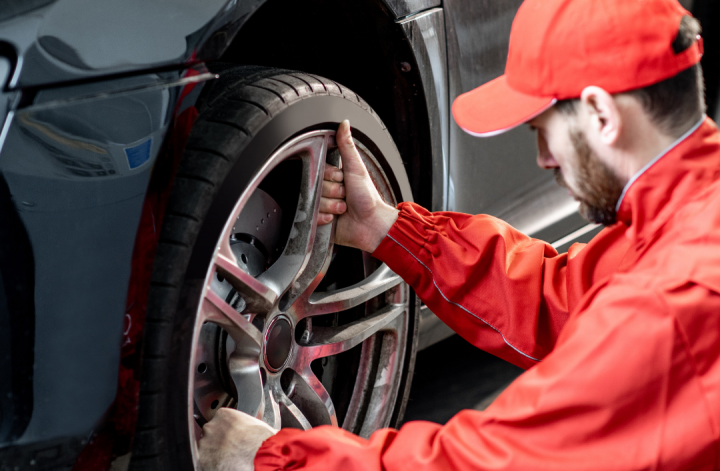What are the best automotive maintenance tips?
Regular car maintenance can help you extend the life of your car. Some car owners report buying fewer cars because of their extended lives. Your car will run better, get you more miles per gallon, and save you more money.
Plus, regular maintenance can help you catch issues before they become larger problems. It can help prevent you from getting stranded on the road or dealing with a car fire.
Carrying out frequent inspection and maintenance of critical components such as belts, hoses, and brake pads can preemptively address potential issues before they escalate into costly repairs. It could also help if you invest in high-quality lubricants and fluids as they aid in minimizing friction and heat buildup, thereby reducing wear and tear on vital engine parts. Moreover, safeguarding vulnerable wiring harnesses with a durable Wire protector sleeve shields them from abrasion, moisture, and heat, preserving their integrity and functionality over time.
That said, find out more about the best automotive maintenance tips a driver should know here.
Check Tire Pressure
Every driver should know the essential automotive maintenance tips when it comes to checking tire pressure. One of the easiest yet most important ways to ensure safety and stability on the road is to check the tire pressure regularly. An over-inflated or under-inflated tire can lead to poor handling and a dangerous situation, so every driver should check the tire pressure of their vehicle once a month, or before a long trip.
To maintain proper tire pressure, use a tire pressure gauge to check the pressure when the tires are cold, before the vehicle has been driven for at least three hours. If you find the pressure is off, add or release air from the tire until it’s back to the recommended pressure on the tire’s sidewall or in the owner’s manual.
Opt for Regular Car Detailing, Painting, and Dent Repair
Over time, dirt, dust, grime, and environmental contaminants accumulate on the car’s exterior and interior surfaces, leading to a dull appearance and potential damage. This makes regular car detailing, painting, and dent fixing crucial because they maintain the overall condition and value of your vehicle. Keep in mind that dents can leave open spaces between the paint and the chassis, which can cause rusting, thereby ruining the paint. Luckily, developments such as paintless dent repair can help manage these kinds of effects, restoring the look of your car. Looking for a quick 3 Day PDR in Austin? You now know what to look for.
Further, car detailing helps to remove these contaminants, preserving the paint, clear coat, and other surfaces from deterioration caused by prolonged exposure. Additionally, it ensures that the car’s cabin remains clean and fresh, preventing the buildup of odors and bacteria. Put simply, car detailing can extend your vehicle’s lifespan and save you from unnecessary expenditures. Wondering where to avail yourself of the services? Look no further than ceramicprotectionanddetailing.com.
Examine Regularly Brakes and Tires
Every driver should know to examine the brakes and tires. Checking your brakes and tires should occur at least every three months for standard vehicles, and more frequently for vehicles used for towing or carrying heavy loads. During an examination, check that the brakes are in working order, inspect the brake pads for visible wear, and make sure that there are no leaks or low levels of brake fluid.
Perform Regular Tune-Ups
Regular tune-ups should be a part of every driver’s automotive maintenance routine. They include changing the spark plugs, filters, and oil, checking the engine and transmission functions, adjusting the chains and belts, and examining other integral parts.
Depending on the make and model of the vehicle, maintenance should be performed at least every 10,000 miles. This helps to ensure the smooth operation of the vehicle, leading to fewer issues down the road, and safer performance.
Proper care and regular tune-up will also help to improve your vehicle’s fuel economy by up to 4%. Check your owner’s manual for recommended maintenance intervals to keep your car in tip-top condition.
Inspect the Belts and Hoses
Inspecting the belts and hoses of a car is an essential part of auto maintenance that every driver should know. Belts, including serpentine and drive belts, carry power throughout the vehicle, and keeping them in working condition is necessary. Replace any belts that show signs of wear, like cracks, dry rot, or fraying.
Hoses, made of rubber, will deteriorate over time and need replacing. Open the hood and inspect all hoses for any bulging, cracking, or discoloration. Squeezing the hoses can help detect any soft spots that can indicate cracks.
All hoses should also be regularly inspected for clogs, tears, and any other damage. Not only does inspecting the belts and hoses help keep your car running smoothly, but it can also help identify any potential problems before they become more serious and costly.
Get an Oil Change
Oil changes are one of the most important pieces of automotive maintenance that every driver should be aware of. Without proper lubrication, your engine can experience severe wear and tear, resulting in lower fuel efficiency, poor performance, and costly repairs.
Most drivers should check their oil level every month or so and change it every 3,000 to 5,000 miles, but it’s best to consult your car’s owner’s manual for the exact number. If your oil is dark, thick, and gritty, it is time for an oil change.
Make sure to bring clean oil and a new oil filter to the mechanic, or use a do-it-yourself kit if you’d like to handle the task yourself. Don’t forget to use the same oil grade as recommended by your car’s manual.
Use These Essential Automotive Maintenance Tips
The above mentioned automotive maintenance tips must be followed by every driver. Even with regular inspections, there might be underlying issues that are not immediately apparent. Therefore, you can think of taking your car to technicians for periodic maintenance or auto repair. Their expertise ensures that your vehicle is in top condition and minimizes the risk of unexpected breakdowns.
Remember, proactive maintenance not only extends your car’s lifespan but also contributes to safer and more enjoyable driving experiences. Following these simple tips can help keep your car in good running condition for years to come, so start now! Did you find this article helpful? If yes, check out our other articles on this site.



